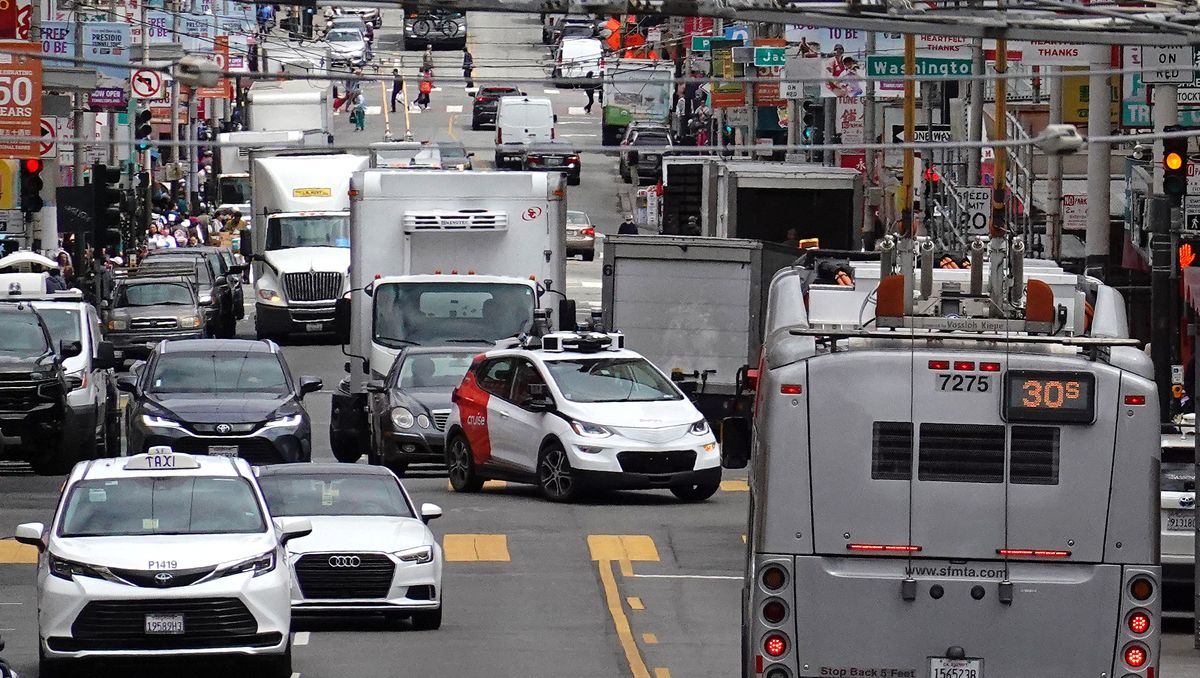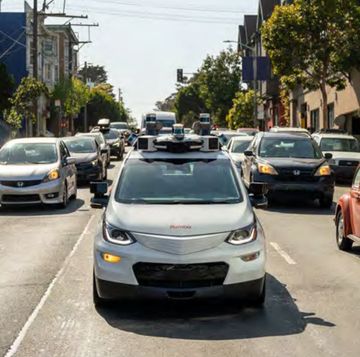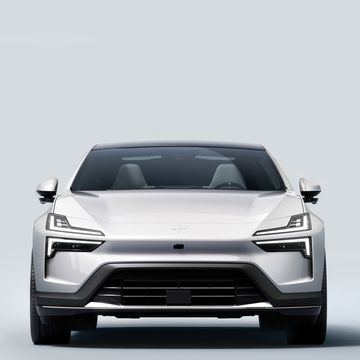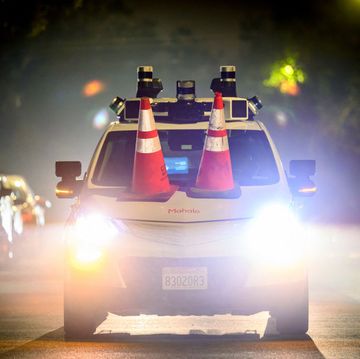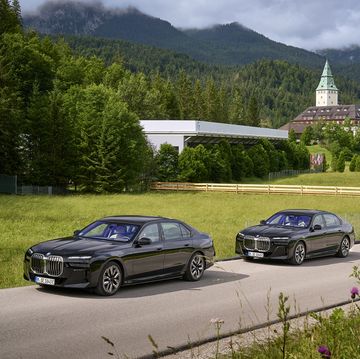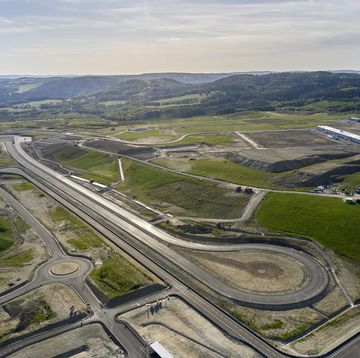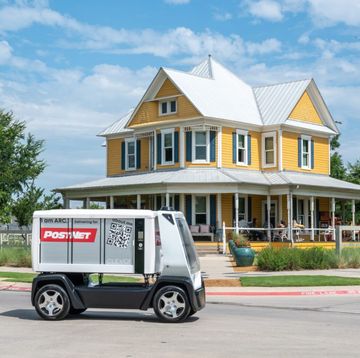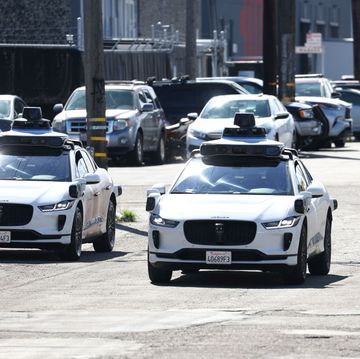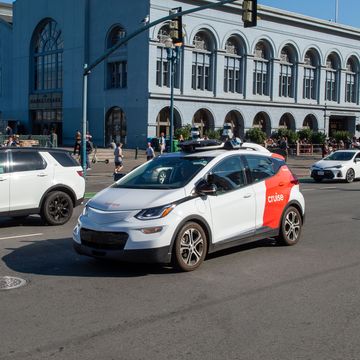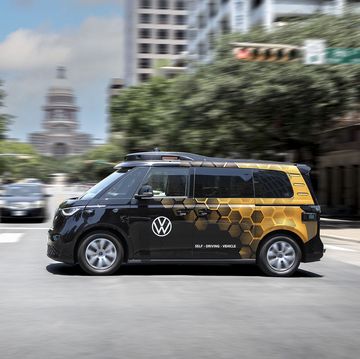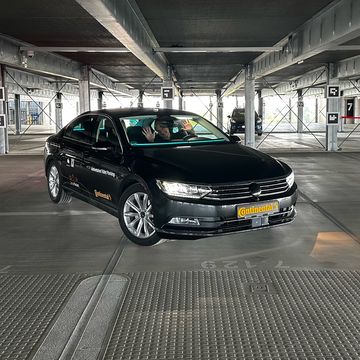- Last week’s vote was a win for robotaxis in California. Until now, Cruise was authorized to offer driverless car service in San Francisco from 10 am to 6 pm without a driver.
- The ruling may also open San Francisco for future competition from Uber and Lyft as they look to save money on paying drivers, and for Tesla.
- “We are disappointed but not surprised that the CPUC approved robot car expansion,” SafeStreetRebel told Autoweek via X-Twitter. “We will continue to push back against car dominance and privatization of transit in all its forms.”
When the California Public Utilities Commission granted permits last week allowing General Motors’ Cruise, and Alphabet’s Waymo robotaxis to pick up passengers in San Francisco, 24 hours a day, seven days a week, it represented a win for driverless cars.
Combined, Cruise and Waymo operate nearly 500 autonomous cars on “geo-fenced” streets in San Francisco, according to a report on NPR’s All Things Considered.
Until now, Cruise was authorized to offer driverless car service in San Francisco from 10 am to 6 pm without a driver. It could operate robotaxis with fared passenger service all day if there was a “safety” driver present and free service anytime without a “safety” driver.
Waymo was even more restricted in its operations. Founded as the Google Self-Driving Car Project in Silicon Valley more than 14 years ago, it previously had permission to offer fared passenger service in San Francisco any time of day or night with a safety driver present, and free-riding passengers anytime without a safety driver.
It was permitted for non-fared passenger service in parts of Los Angeles and in the Mountain View area without a safety driver.
The new permit “marks the true beginning of our commercial operations in San Francisco,” Waymo co-CEO Tekedra Mawakana said in a statement. “We’re incredibly grateful for this vote of confidence from the CPUC, and to the communities and riders who have supported our service. We can’t wait for more San Franciscans to experience the mobility, safety, sustainability, and accessibility benefits of full autonomy for themselves—all at the touch of a button.”
The ruling may also open San Francisco for future competition from Uber and Lyft as they look to save money on paying drivers, and for Tesla. CEO Elon Musk last month promised Tesla robotaxis by the end of 2024.
CPUC’s approval comes after high-profile opposition from Police and Fire Department officials and bike commuting advocates in San Francisco.
There have been complaints of Chevrolet Bolt-based Cruise and Jaguar I-Pace-based Waymo robotaxis crossing into yellow-taped police response scenes and blocking trucks from leaving or entering firehouse driveways.
NPR captured sound of a firefighter trying to prevent a driverless taxi from running over a water line and potentially shutting off flow at a critical moment in a firefight.
A retired deputy city attorney was entering an intersection in San Francisco’s Pacific Heights neighborhood in early June when a Cruise hit one of her black Labradors, according to The Wall Street Journal. (We’re happy to pass on that the lab was not injured.)
Emergency personnel reportedly have had to break windows in order to move or shut down the driverless cars. Urban cycling advocacy group SafeStreetRebel have “bricked” some of the cars by placing orange cones on their hoods.
With cameras, radar, and lidar on the cars’ tops, an orange cone on the hood is read like a cone directly in front of the car on the street.
“We are disappointed but not surprised that the CPUC approved robot car expansion, especially given that one of the votes in favor was from Cruise’s former lawyer,” a SafeStreetRebel told Autoweek via X-Twitter. “This is a prime example of regulatory capture, as no regulation was added for disability, environmental surveillance, or emergency response concerns. We will continue to push back against car dominance and privatization of transit in all its forms.
“Given the amount of problems on the street already caused by robot cars, we have a hunch things will not go as smoothly as GM and Google hope. The only path forward to healthier, safer, more sustainable cities is taking cars off the street, not adding new ones. And of course, more cones.”
A Cruise spokesman said via email that “these events are extremely rare. We are dedicated to enhancing our technology, and we maintain an open line of communication with first responders to receive feedback and discuss specific incidents to improve our response. Our AVs are designed to recognize emergency vehicle sirens and lights and yield to them while following traffic rules (i.e., pulling over.)”
Cruise also operates robotaxis in Phoenix and Austin, Texas, and has announced its first eastern city, Miami. Waymo also is in Phoenix along with San Francisco and LA.
Neither company has publicly committed so far to testing in a northern city, where snow and ice affect the way sensing devices direct the car around the road.
GM, in its second-quarter earnings call, touted Cruise as “scaling progressively faster.” It just reached 3 million driverless miles in 49 days, nearly twice as fast as the second million.
GM is operating 390 driverless autonomous cars in San Francisco, Phoenix, and Austin. But it had just $100 million in revenues and lost about $1.2 billion in the first half of 2023.
Full-year 2022 results were $3.3 billion in costs on top of $102 million in revenues.
GM paid $900 million for a share of Cruise in 2018, and last year it purchased SoftBank’s interest in the company, for a total of $3.5 billion.
A week before the CPUC ruling, Cruise signed an agreement with San Francisco local chapters of the International Brotherhood of Electrical Workers and the Service Employees International Union to employ “dozens” of workers who will construct and staff Cruise facilities, Reuters reports.
GM CFO Paul Jacobson recently told a JP Morgan investor conference that Cruise has “largely solved all the technology challenges,” reports Automotive News, and will meet the goal of $1 billion in gross revenues by 2025, with growing margins and falling costs. The target cost is less than $1 per mile.
Alphabet does not separately report financial results for Waymo or any of its other business units, but Alphabet says it has raised along with outside investors more than $5.7 billion in funding for the unit since 2020.
Waymo has about 250 cars in San Francisco, 200 in Phoenix, and a few more “sprinkled” in other testing fleets across the US.
Are there any other US cities where you think robotaxis might work? Please comment below.
As a kid growing up in Metro Milwaukee, Todd Lassa impressed childhood friends with his ability to identify cars on the street by year, make, and model. But when American automakers put an end to yearly sheetmetal changes, Lassa turned his attention toward underpowered British sports cars with built-in oil leaks. After a varied early journalism career, he joined Autoweek, then worked in Motor Trend’s and Automobile’s Detroit bureaus, before escaping for Mountain Maryland with his wife, three dogs, three sports cars (only one of them British), and three bicycles. Lassa is founding editor of thehustings.news, which has nothing to do with cars.
